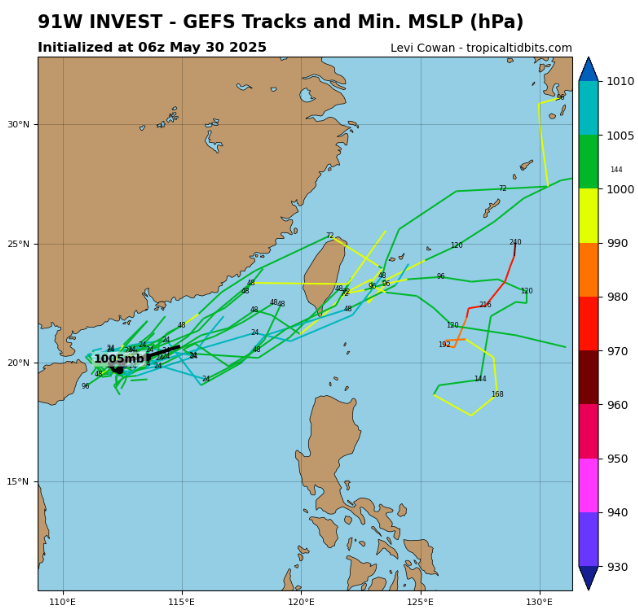
Southeastern Siberia and eastern Mongolia experienced temperatures soaring up to 35°C (95°F), significantly above seasonal norms. Notably, Chernjaevo in Siberia reached 35.1°C, while Huma, China, reported 36.2°C. These temperatures are indicative of a broader trend of Arctic amplification, where the Arctic region warms faster than the global average.
Northern and central China are currently enduring record-breaking May heat, with temperatures surpassing 40°C (104°F) in several areas. The National Meteorological Centre has issued heat warnings, and authorities are implementing measures to mitigate the impacts on agriculture and public health.
The United Arab Emirates broke its May temperature record twice in succession, reaching a scorching 51.6°C (124.9°F). This extreme heat has raised concerns about public health, energy consumption, and water resources in the region.
Meanwhile, the western Pacific is showing early signs of cyclone activity. A tropical depression is currently developing east of the Philippines and is forecast to intensify as it tracks northwest toward southern China and Taiwan. While it is still uncertain whether the system will strengthen into a named storm, forecasts suggest landfall or coastal impacts could occur within the first week of June.
Heavy rainfall, gusty winds, and rough seas are expected to affect Taiwan, the southern coast of China (especially Guangdong and Fujian provinces), and possibly parts of Japan’s Ryukyu Islands. Local authorities are preparing coastal defenses and warning vessels to avoid the region. If conditions remain favorable, this system could become the first significant tropical cyclone of the 2025 typhoon season.
While some regions swelter, others are drowning. The South Asian monsoon has arrived early and aggressively, bringing torrential rains to parts of India, Myanmar, and Bangladesh.
In northeast India, the states of Assam, Meghalaya, and Tripura have been inundated by relentless downpours. Sohra (Cherrapunji), one of the wettest places on Earth, recorded over 200 mm of rainfall in a single day. Landslides have blocked roads, and rivers are rising to dangerous levels. Local governments have issued red alerts and are evacuating flood-prone areas.
In central India’s Maharashtra state, a canal breached after heavy rains dumped over 130 mm in 24 hours. Ten villages were flooded in Indapur tehsil, with dozens of homes damaged and families displaced. Emergency teams are distributing supplies and reinforcing embankments ahead of more rain.
In Myanmar, monsoon rains are compounding the aftermath of a deadly earthquake that struck two months ago. The already displaced population faces further hardship as makeshift shelters are drenched and access routes become impassable.
91W INVEST HITS TAIWAN

Source: https://www.tropicaltidbits.com/storminfo/91W_gefs_latest.png
HEATWAVE IN SIBERIA
HEATWAVE IN THE MIDDLE EAST



























